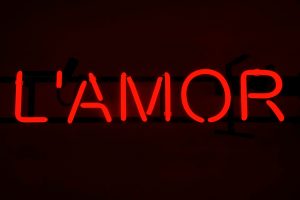 Humans are, at their core, speaking beings. Our capacity to communicate through language defines much of what it means to be human, shaping our relationships, culture, and sense of self. From the moment we learn to speak, we use language as the primary tool for expressing our thoughts, feelings, and desires. However, as much as language enables us to articulate our inner world, it also reveals what we struggle to say—or even what we cannot say at all.
Humans are, at their core, speaking beings. Our capacity to communicate through language defines much of what it means to be human, shaping our relationships, culture, and sense of self. From the moment we learn to speak, we use language as the primary tool for expressing our thoughts, feelings, and desires. However, as much as language enables us to articulate our inner world, it also reveals what we struggle to say—or even what we cannot say at all.
In the realm of psychoanalysis, language is not merely a means of communication but a reflection of the unconscious. Gaps, slips, and pauses in speech, far from being irrelevant, can offer glimpses into the hidden depths of the psyche. Sigmund Freud famously highlighted that what is left unsaid, what is misarticulated, or what escapes through errors, can carry as much meaning as the words we consciously choose.
Language has long been a central focus of study in disciplines like linguistics, philosophy, and psychoanalysis. Two of the most influential figures in linguistics, Noam Chomsky and Ferdinand de Saussure, laid the groundwork for much modern language theory. On a different but related front, psychoanalysis, particularly the work of Sigmund Freud and later Jacques Lacan, also delves into language but through the lens of the unconscious mind.
Interestingly, despite the distinct disciplines—linguistics and psychoanalysis—there are profound intersections where these theories of language and the unconscious converge. Below, we will explore how Chomsky’s generative grammar relates to Saussure’s structural linguistics and psychoanalytic concepts of the unconscious, particularly in Lacanian thought.
Chomsky’s Generative Grammar and the Cognitive Unconscious
Noam Chomsky revolutionised linguistics with his theory of generative grammar, positing that human beings have an innate ability to produce and understand an infinite number of sentences. Central to this theory is the concept of universal grammar—an inherent set of linguistic rules shared by all humans, regardless of culture or language. According to Chomsky, this universal grammar is hardwired into the human brain, making language acquisition a largely unconscious process.
Chomsky’s theory highlights the cognitive unconscious—the mental structures that operate below conscious awareness. We don’t consciously calculate syntactic rules when we speak; instead, we unconsciously access a deep, internalised system of language that enables fluent communication. In this way, Chomsky’s ideas suggest that much of our language use is rooted in an unconscious framework, not dissimilar from the Freudian unconscious but more biologically driven.
Saussure’s Structural Linguistics and the Social Unconscious
Ferdinand de Saussure, often considered the father of modern linguistics, introduced the concept of structural linguistics. He argued that language is a system of signs where the relationship between the signifier (sound or written word) and the signified (concept or meaning) is arbitrary. Language, for Saussure, is a social construct—a set of conventions agreed upon by a linguistic community.
Saussure emphasised the collective, social aspect of language rather than focussing on the individual mind, as Chomsky did. However, Saussure’s structuralist view also implies an unconscious dimension. The structure of language, with its arbitrary signs and rules, governs how individuals express thoughts without them being fully aware of this system. We "speak" within the boundaries of this structure, unconsciously following the rules and patterns of our language.
In Saussure’s theory, language is a social unconscious, shaping the way we think, communicate, and interpret the world. We are bound by linguistic structures that we did not create and that function beyond our immediate awareness, echoing the unconscious aspects of human cognition and behaviour explored in psychoanalysis.
 Psychoanalysis, Lacan, and the Linguistic Unconscious
Psychoanalysis, Lacan, and the Linguistic Unconscious
The psychoanalytic tradition, particularly through the work of Sigmund Freud and Jacques Lacan, offers a different perspective on the unconscious and language. Freud’s notion of the unconscious mind is a repository of repressed desires, memories, and thoughts. For Freud, language plays a key role in the formation of the unconscious, particularly in how repressed material surfaces in dreams, slips of the tongue (Freudian slips), and free associations. Freud might interpret gaps in language as indicative of unconscious processes at work. He believed that slips of the tongue, forgotten words, or hesitations in speech (which he termed "Freudian slips") often reveal underlying thoughts, desires, or repressed emotions that the conscious mind tries to suppress.
Lacan took this further by famously asserting that "the unconscious is structured like a language." Lacan’s reinterpretation of Freud through the lens of structural linguistics (heavily influenced by Saussure) suggested that the unconscious mind operates according to linguistic rules and structures. The signifier-signified relationship from Saussurean theory becomes crucial in Lacanian psychoanalysis. The unconscious is seen as a linguistic system that operates outside of conscious awareness but influences thought and behaviour.
Lacan’s psychoanalytic theory also parallels Chomsky’s idea of an innate structure for language. While Chomsky focusses on syntax and cognitive processes, Lacan views the unconscious as a realm where desire is expressed through a hidden structure of language, with symbols and signs revealing unconscious drives.
The Intersection: Language, Structure, and the Unconscious
At the heart of all three frameworks—Chomsky’s, Saussure’s, and Lacan’s—is the idea that language operates beyond conscious control. For Chomsky, this is a matter of cognitive science: the unconscious structures of language are innate and biologically programmed. For Saussure, it’s the social unconscious: language is a structure imposed by society that individuals follow without fully understanding. For Lacan, the unconscious is not just influenced by language but fundamentally structured by it, connecting the deep psyche with linguistic symbols.
All three thinkers share the view that language both shapes and reveals human thought. In different ways, they propose that language is not merely a tool for communication but an intrinsic part of the unconscious—whether through biological, social, or psychoanalytic mechanisms.
 Conclusion
Conclusion
Chomsky, Saussure, and psychoanalysis all provide profound insights into how language operates beneath the surface of human consciousness. Chomsky’s focus on the cognitive unconscious reveals how language is hardwired into the brain, while Saussure’s structuralism shows how language is a social system we unconsciously follow. Psychoanalysis, particularly Lacan, ties these ideas together, asserting that the unconscious itself is structured like a language.
These perspectives collectively offer a deeper understanding of the human mind, highlighting how language is not just a tool we use but a fundamental system that structures our unconscious thoughts, desires, and social interactions. The intersection of linguistics and psychoanalysis provides a rich terrain for exploring the complexities of language, thought, and the unconscious.
